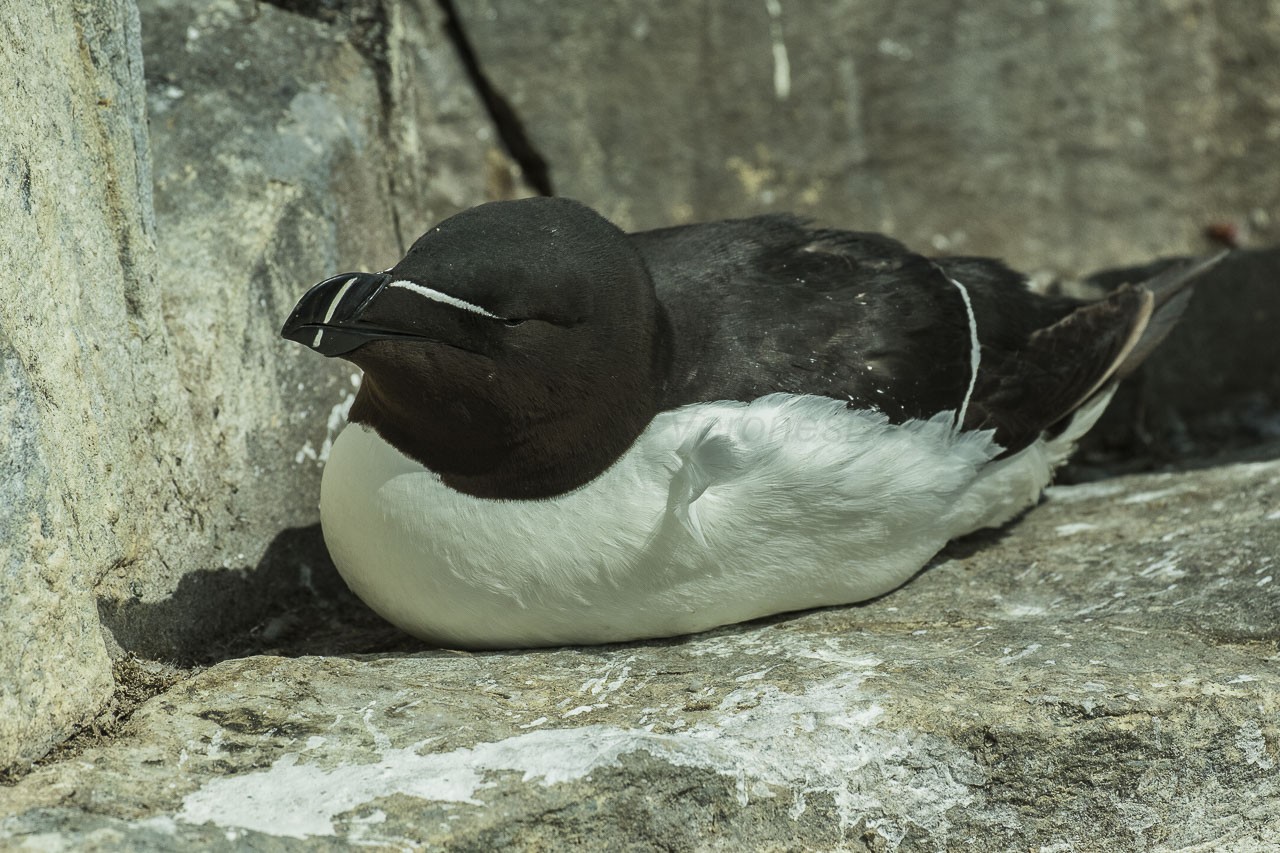 Is a razorbill a penguin?
Is a razorbill a penguin?
Is a razorbill a penguin?
The razorbill has a white belly and a black head, neck, back, and feet during the breeding season. A thin white line also extends from the eyes to the end of the bill. Its head is darker than that of a common murre. During the non-breeding season, the throat and face behind the eye become white, and the white line on the face and bill becomes less prominent. The bill is black, deep and laterally compressed, with a blunt end. It has several vertical grooves or furrows near the curved tip, one of them adorned with a white, broken vertical line. The bill is thinner and the grooves are less marked during the non-breeding season. It is a large and thick-set bird, for an alcid, and its mean weight ranges from 505 to 890 g (17.8 to 31.4 oz). The female and male adults are very much alike, having only small differences such as wing length. It is 37–39 cm in body length, the wing length of adult males ranges from 201–216 mm (7.9–8.5 in) while that of females ranges from 201 to 213 mm (7.9 to 8.4 in). During incubation, this species has a horizontal stance and the tail feathers are slightly longer in the center in comparison to other alcids. This makes the razorbill have a distinctly long tail which is not common for an auk. In-flight, the feet do not protrude beyond the tail. Their mating system is female-enforced monogamy; the razorbill pairs for life. It nests in open or hidden crevices among cliffs and boulders. It is a colonial breeder and only comes to land to breed. The annual survival rate of the razorbill is between 89 and 95%. Though the razorbill's average lifespan is roughly 13 years, a bird ringed in the UK in 1967 survived for at least 41 years—a record for the species.
